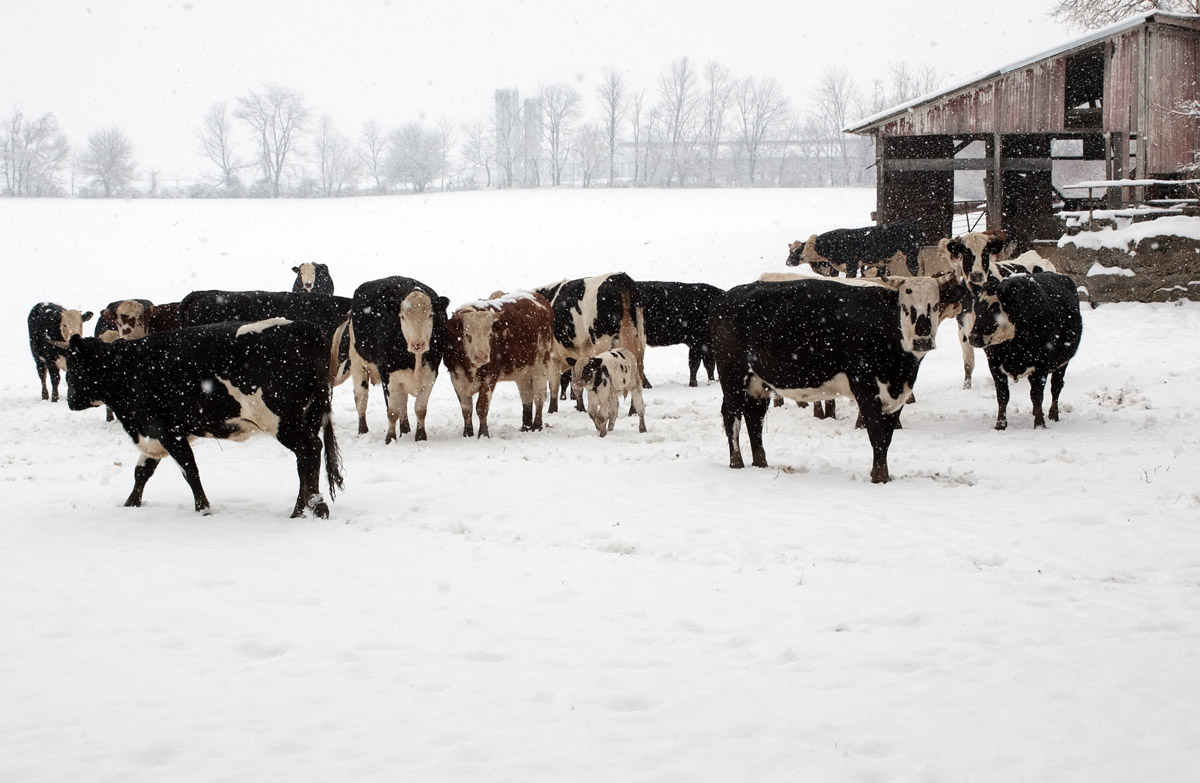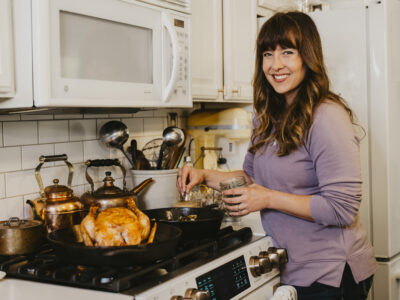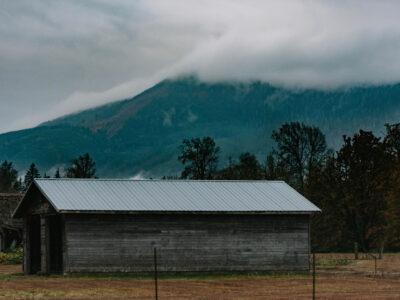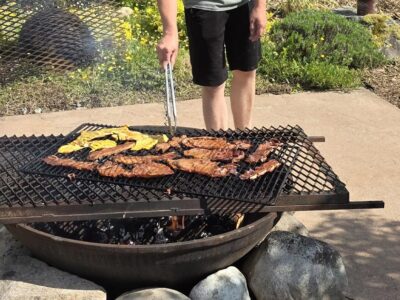There’s no better time to prepare for winter. Here are my best tips for how to prepare for winter, including every area of the homestead.
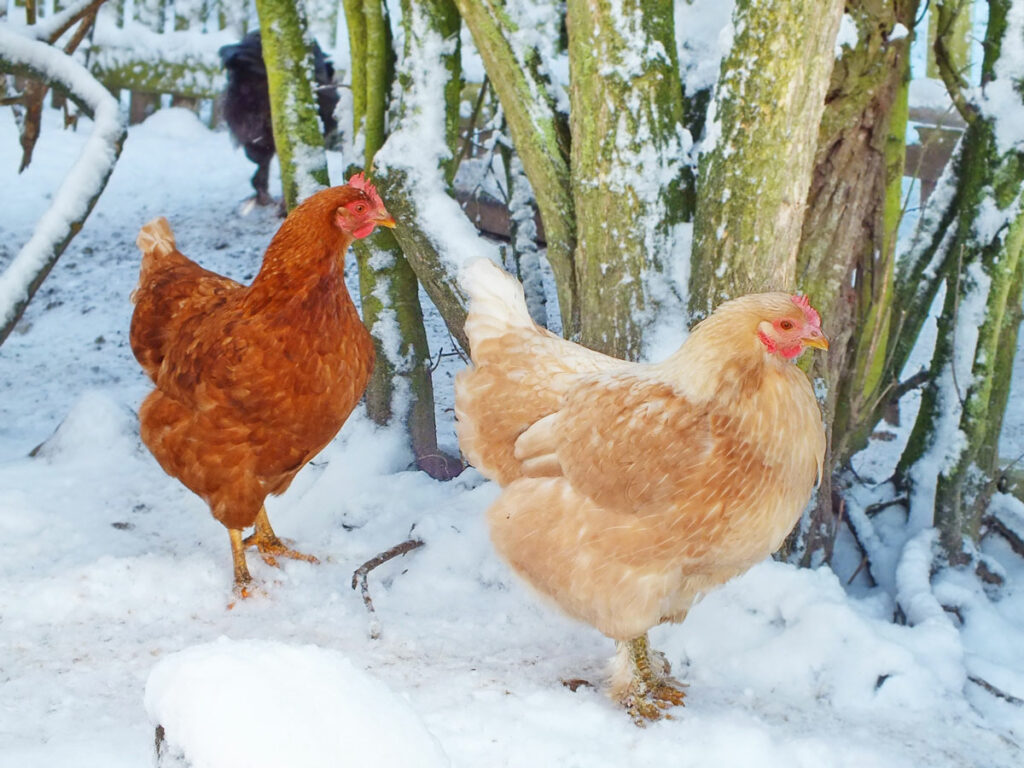
Here in the Pacific Northwest of Washington state, in the north Cascade mountain range, my husband and our two kiddos live on our modern homestead of 15 acres.
We raise our own beef cattle, pork (some years), and laying hens, and we also raise and butcher our own meat chickens.
We’ve got a big old vegetable garden, medicinal herb garden and a fruit tree orchard, and from our garden to our livestock we use organic practices.
So how do we make sure all these areas of the homestead are prepared and ready for the winter season? I’m sharing all my tips with you in this blog post and podcast.
This post was published with my original podcast (episode #364) and has since been updated with episode #447, Fall Homestead and Gardening Tasks.
Listen to episode #364, Tips to Get Your Homestead Ready for Winter below:
Listen to these 12 Tips to Get Your Homestead Ready for Winter below:
If you’re a member of the Pioneering Today Academy, then this might sound familiar, as this is part of what we’re going through together as part of our Homestead Winter Readiness Challenge.
If you’re not a member of the Pioneering Today Academy, use that link and sign up for the waitlist so you will be notified the next time we open our doors for enrollment.
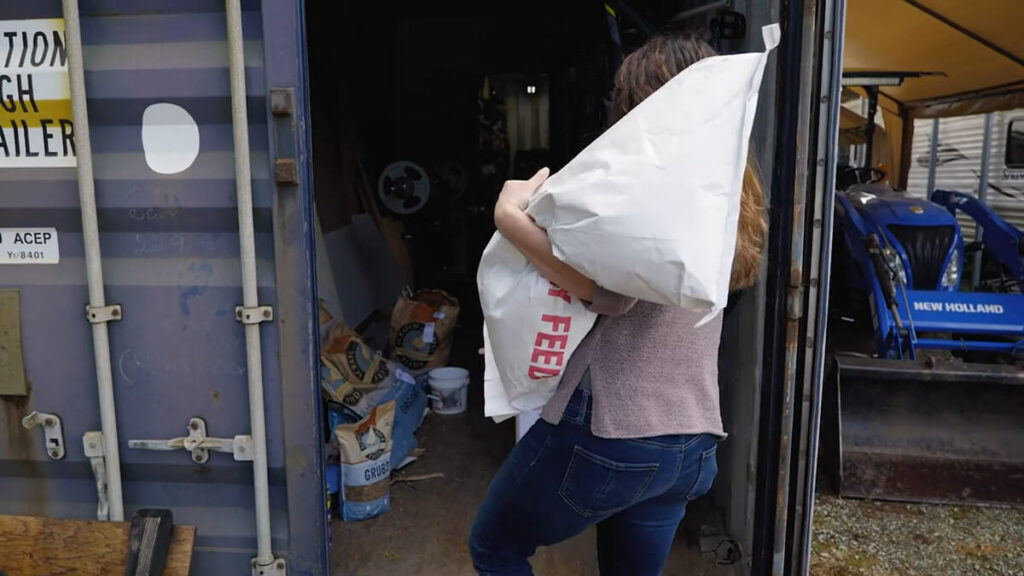
Table of Contents[Hide][Show]
Livestock and Animals
Assess Your Feed Supply
Because we raise our cattle all on grass and hay, we have to make sure we have enough hay to feed them through the winter months. I’ve written an entire post on how we stock up our feed supply here, so read that for more info.
But when planning your feed you need to be sure to consider extremes. For instance, this year (2022) was the coldest and wettest spring I can remember in my 41 years. Because it was so cold, our grass wasn’t growing in early spring as it normally does, so we had to supplement hay for our cattle when they’d usually be on grass.
Likewise, some years the summer months are extremely dry where the grass is no longer growing toward the end of summer, forcing us to tap into our hay stores again to feed our cattle at the end of summer.
And, if you experience an extremely cold and snowy winter, the grass your cows may normally forage for might be covered in snow, so you’ll need to supplement extra hay to make up for what they don’t have access to. Furthermore, when it’s extremely cold out, your animals will also eat more.

If you’re not prepared for this ahead of time and don’t have enough feed for these extremes, you may need to consider selling or butchering an extra animal or finding a last-minute hay source (which can tend to be costly).
However, if you’re prepared and have enough feed, you can capitalize on these extremes and oftentimes pick up extra animals that are being liquidated from other farms that may not have enough feed to get them through the winter.
We like to buy those big marshmallow bales of haylage that are wrapped in plastic. This allows the hay to be stored out in the elements without the risk of mold or damage and also tends to be more cost effective because it’s such large quantities.
Read more (or listen to the podcast) about raising your own beef here.
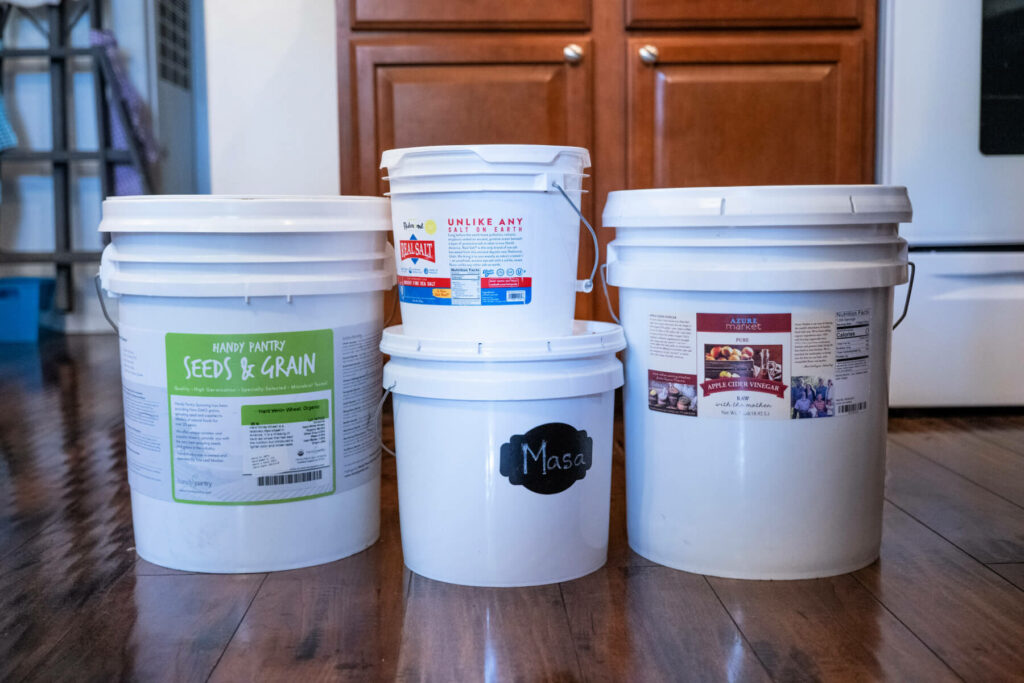
Supplements
Something you’ll need to think about in addition to feed are the supplements you give to your livestock. For us, this includes salt.
This podcast is sponsored by Azure Standard, and I’ve been getting my Redmond Real Salt through them for many years. Redmond has a livestock animal salt, as well as salt that I use in the kitchen.
I just got two 25lb bags of salt and, at the time of this recording, saved $25 over purchasing them directly from the Redmond website.
If you’re a new Azure Standard customer, and you make a $100 dollar purchase, you’ll get an additional 15% off by using my link with code “Melissa15” (this is for new customers only).
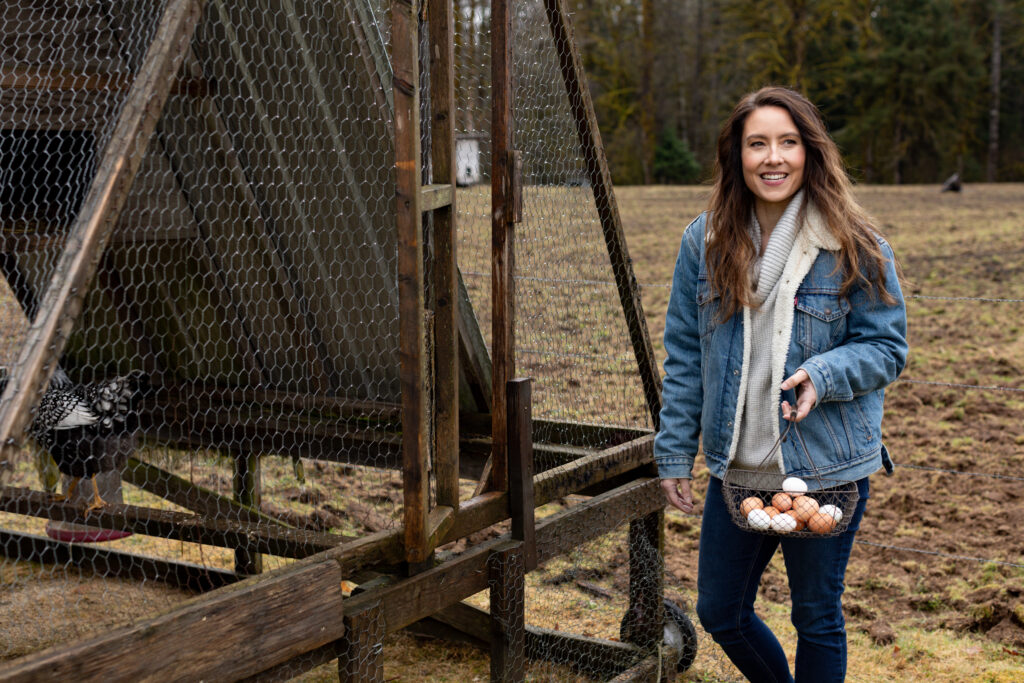
Shelter
For many years, we didn’t have a barn for any of our animals. However, recently we purchased a 40-acre homestead just half a mile from our home that has a barn. But know that you can definitely raise your own animals without having a barn.
There are ways to do it.
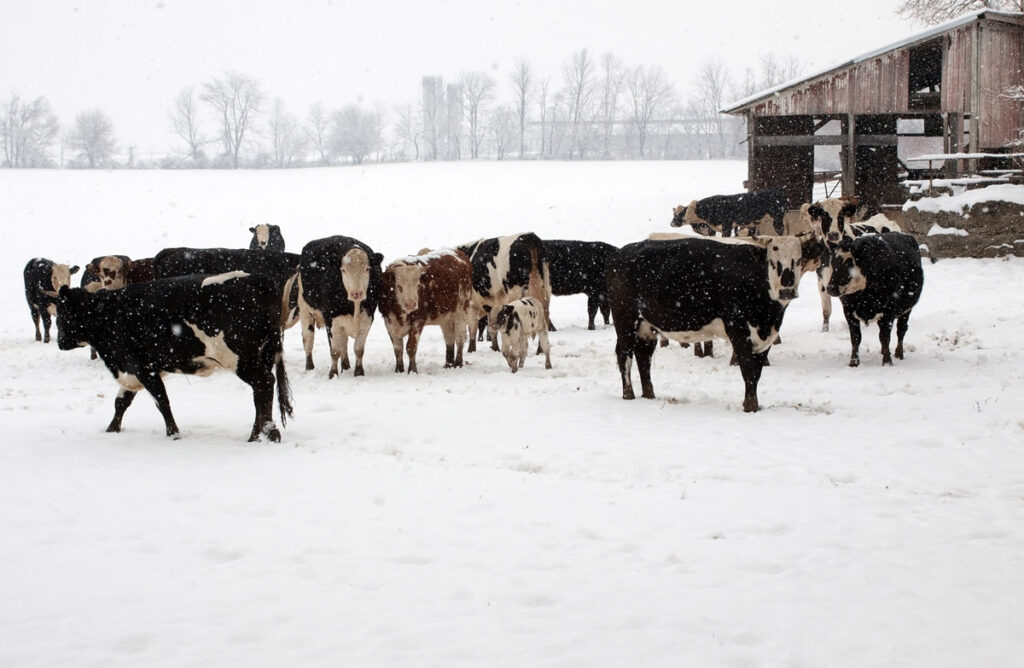
Cow’s Shelter Needs
Cows are extremely resilient when it comes to harsh weather. But when raising cattle without a barn, utilize some of the natural advantages of your property.
We have some different shelter areas around our property. There’s a fairly heavily wooded area where we’ve got evergreen trees, so our cows can get under that when there is really heavy snow or a lot of rain coming out.
We have some pasture elevation changes, so if there’s a lot of wind coming, they can do down to that bottom pasture and snuggle up right at the bottom of that bank, and then the wind goes over the top of their backs. This creates a natural wind block for the cattle.

Pig Care & Shelter Needs
We have a shed for the pigs in the pigpen to get out of the weather. When the colder weather rolls around, we’re usually still about four to five weeks out from butchering. But pigs aren’t meant for really cold weather. Part of the problem, if they start to get cold, is they can get sick very easily, and they also eat more to keep up their body fat.
If you’re planning to keep some pigs throughout the winter months, just plan for their feed needs to compensate for the colder weather, and be sure they have access to warmth to avoid illness.
For more information, read this post on raising pigs for meat.
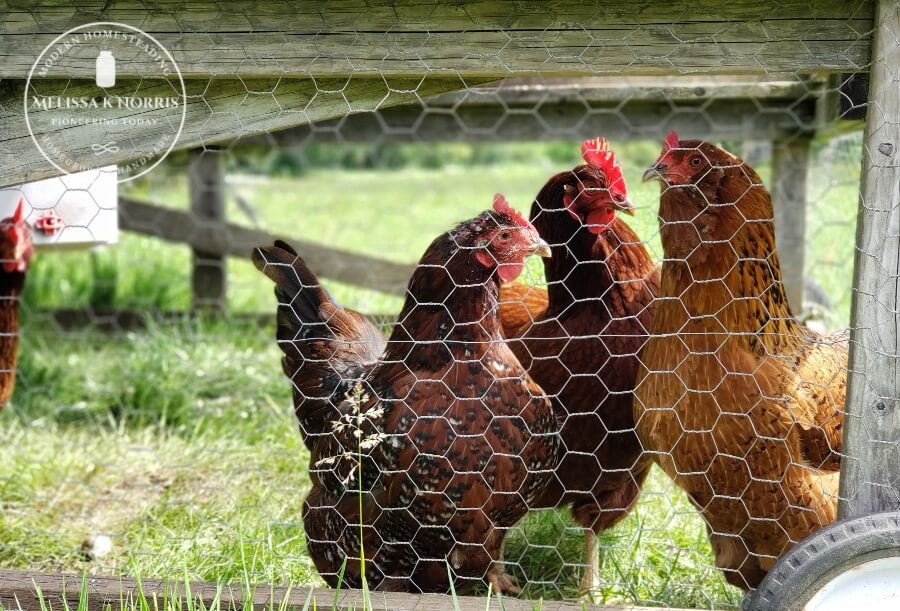
Chicken Care & Shelter Needs
When it comes to keeping a flock of chickens through the winter months you’ll have to decide whether or not to use artificial light or heat lamps to keep your chickens laying.
We do not use heat lamps for our chickens. They have got a nice, insulated coop and we choose to give our chickens a break, as we think this is the way God intended when He created them.
Furthermore, when you’re not using an additional heat source, the chickens get acclimated to the colder weather one day at a time. This prevents them from having issues if the electricity goes out and all of a sudden there’s no power to run their heat lamp.
Furthermore, when you’re not using an additional heat source, the chickens get acclimated to the colder weather one day at a time. This prevents them from having issues if the electricity goes out and all of the sudden there’s no power to run their heat lamp.
This does mean that you’re feeding a flock when they’re not giving back as many eggs to merit the cost of feed. This is a decision you’ll have to make and be OK with, or use artificial light.
Make sure to consider the weather patterns when locating your chicken coop. Our coop is mobile, so we arrange it where it will get natural sunlight during the day, but the door is facing away from the direction that the winter winds blow in. This keeps the coop warm, and prevents the cold winds from blowing through their door.
For more information, read this post on keeping backyard egg-laying chickens here.
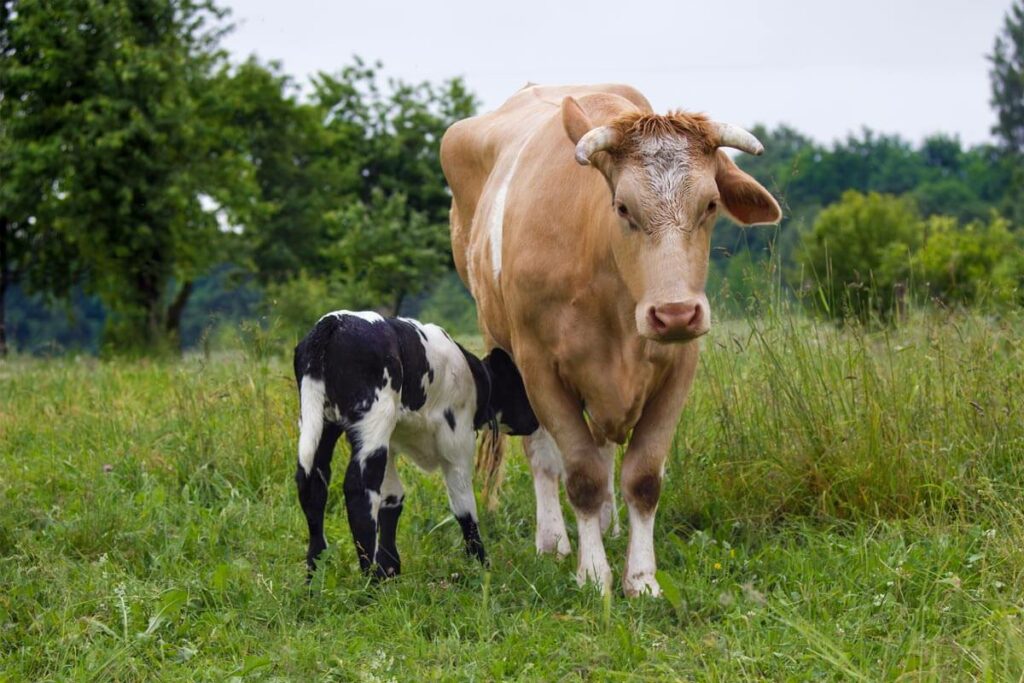
Breeding Cycles
In order to keep our beef herd going, we breed back our cows. I’ve got two of my cows that need to be bred back now in order for them to calve next year.
A cow’s gestation period is very similar to that of a human. It’s about nine months. If you breed your cows in the fall, they will have their babies early next summer.
If you’re not breeding back (we don’t breed or keep pigs year-round), make sure you’re lined up with a breeder to get your animals from in the springtime.
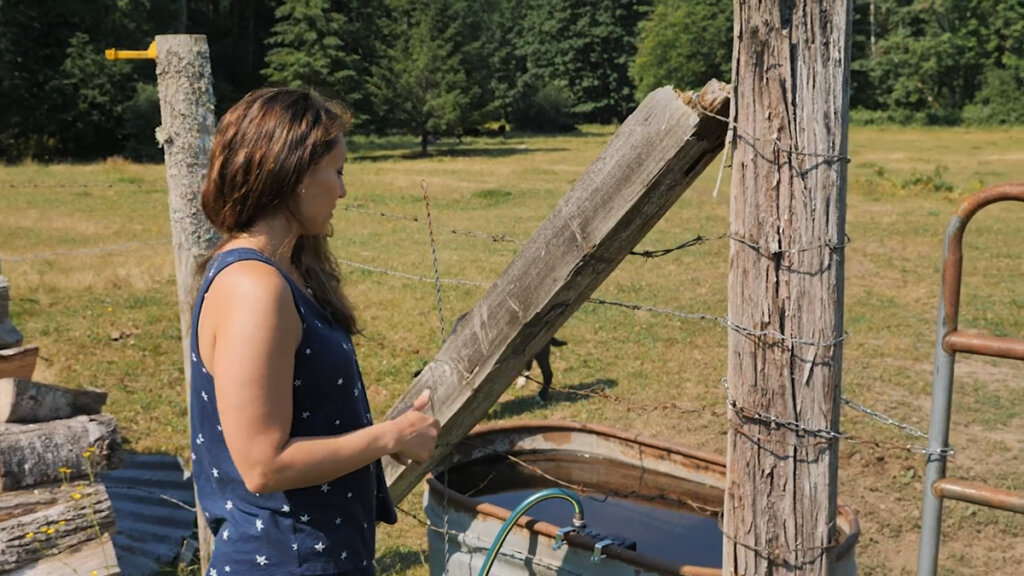
Water
Do you have a plan for your water during freezing temperatures? This is important! Water alone is a very important thing, but water during the cold months is critical.
I can supply the chickens with fresh water easily from the house or our frost-free pump (they don’t drink as much).
However, I can’t pack enough water to keep our cattle herd supplied when it’s freezing, so we use an electric stock tank heater during the winter. This is a good time of year to make sure it’s in working order, with no frayed cords (or mice chewing on the electric components over the summer), and is in a spot ready to go when the cold hits.

Garden Tips
This post will mostly cover the homestead tasks, but we can’t overlook the garden in our fall cleanup! Check out this post on my fall garden tasks to learn everything I do to prepare my garden for spring.
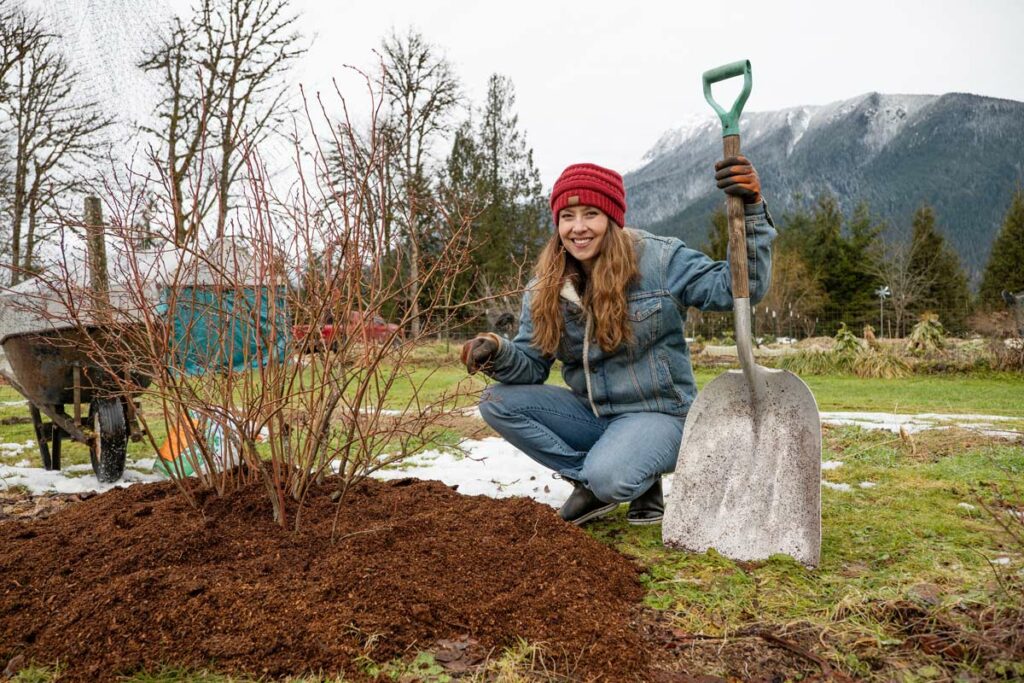
Fruit Trees & Berry Bushes
Fruit orchards and berry patches need some fall clean up as well, so don’t forget about these areas!
We have to pick up any apples and other fruit that’s fallen to the ground in our orchards because we struggle with apple maggots. If we don’t do this clean up in the fall, our infestation will be worse the following summer.
Be sure to check out this post on pruning apple trees in winter!
This is also a great time of year for you to assess how much harvest you got off of your fruit crops. Think about your fruit trees, berry bushes, etc. This is the perfect time of year in the fall to put in some more trees or bushes, if needed.
Fall can be a great time to plant fruit trees. The tree’s roots will have time to grow deep before the stress of summertime.
As trees and bushes start to move into their dormancy, that can be a good time to plant them. Check out this post on planting fruit trees for more info.
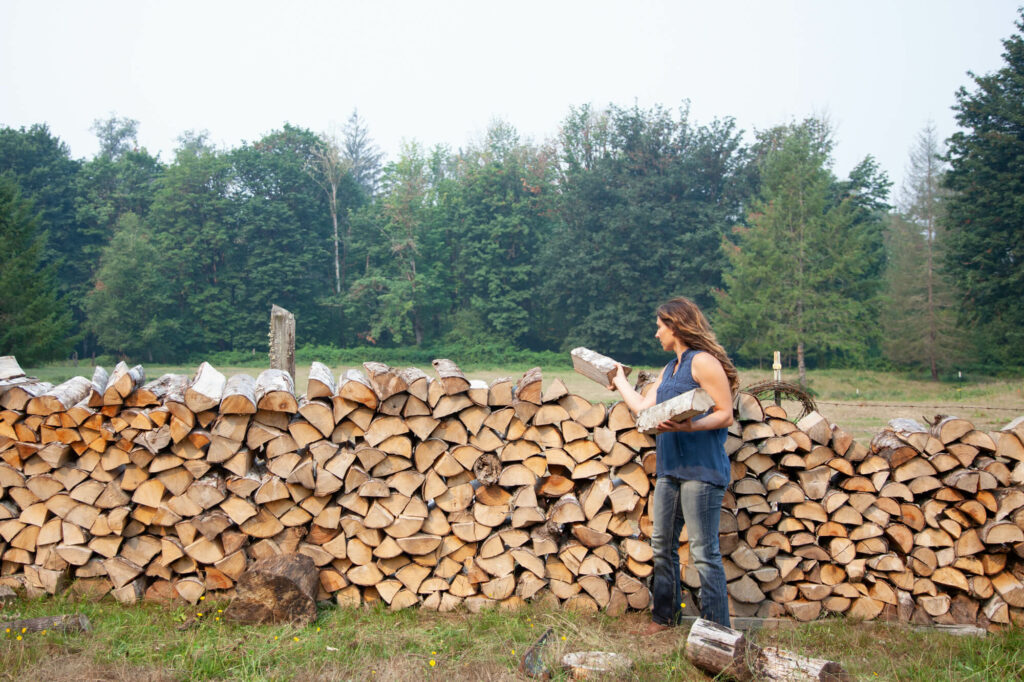
Ready Your House for Winter
Heat Source
We use a wood stove as our primary heat source. Because our homestead has plenty of forest, we lose at least one to two trees every year. These trees are then turned into firewood.
We’ll split and stack the wood in early summer, then rotate it into the woodshed once it’s nice and dry.
We use the wood stove for cooking and as a heat source during the winter months.
Make sure that you clean your chimney out. Nobody wants a chimney fire. We usually do it a couple of times throughout the winter, but definitely at the beginning of the fire season.
- Whatever your heat source, make sure it’s ready to go (cleaning, maintenance, etc.)
- Clean out the gutters, those heavy rains are a coming.
- Redo any seals on the roof around chimneys and/or vents.
Emergency Preparedness
To be prepared for a power outage, we make sure our generator is in good working condition. We also make sure we have headlamps with fresh batteries and oil lamps so we have light if the power is out for an extended amount of time.
For more information, check out this post on staying prepared on the homestead and how to use a generator.
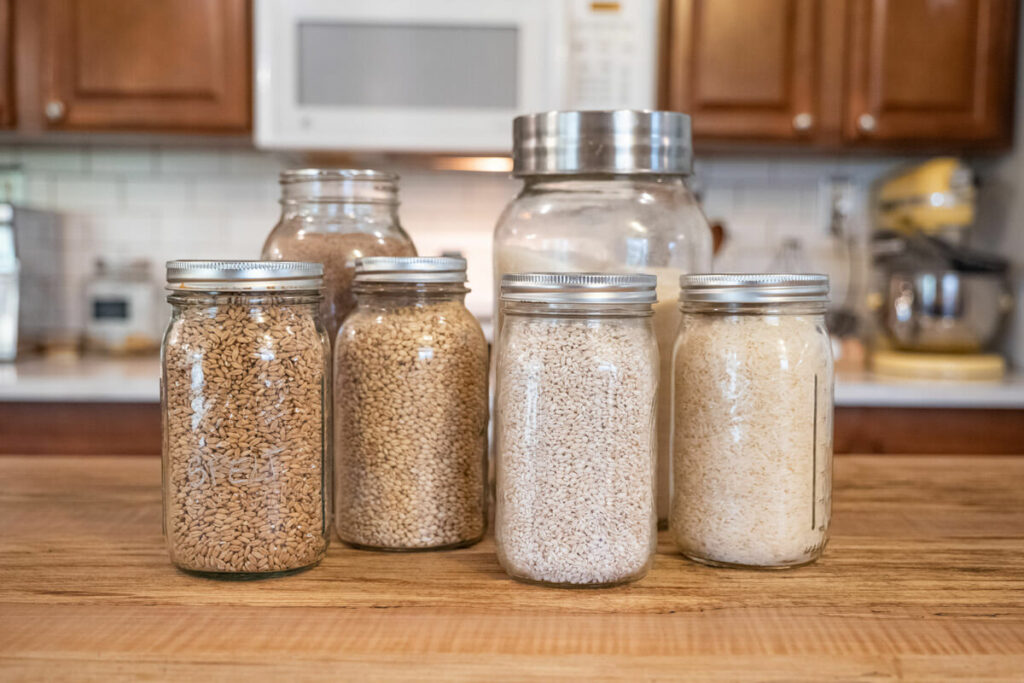
Kitchen & Pantry
Make sure your pantry and larder are well stocked for winter. This time of year is busy with preservation from the garden. But don’t forget all your basic pantry staples like flour, sugar and salt.
Check out this post on the must-have pantry staples for long-term storage. And this post on 129+ best preservation recipes you’ll want to know about!

Fall Cleaning (It’s like Spring Cleaning, but in the Fall!)
Bonus tip, do some fall cleaning!
I know a lot of people get into spring cleaning, but fall is as important around here as spring.
I like to do as much drying out on the clothesline as possible. This is the time of year I take all our curtains, throws, rugs, and quilts, and give them a good wash. They then go out on the clothesline (as long as it’s not raining) before coming back into the house.
And there you have it! My tips on how to get ready for winter. I’m sure this list could go on and on, but at some point we run out of time. I’d LOVE to hear from you about what else you do to get your house and homestead ready for winter. Leave me a comment and let me know below.
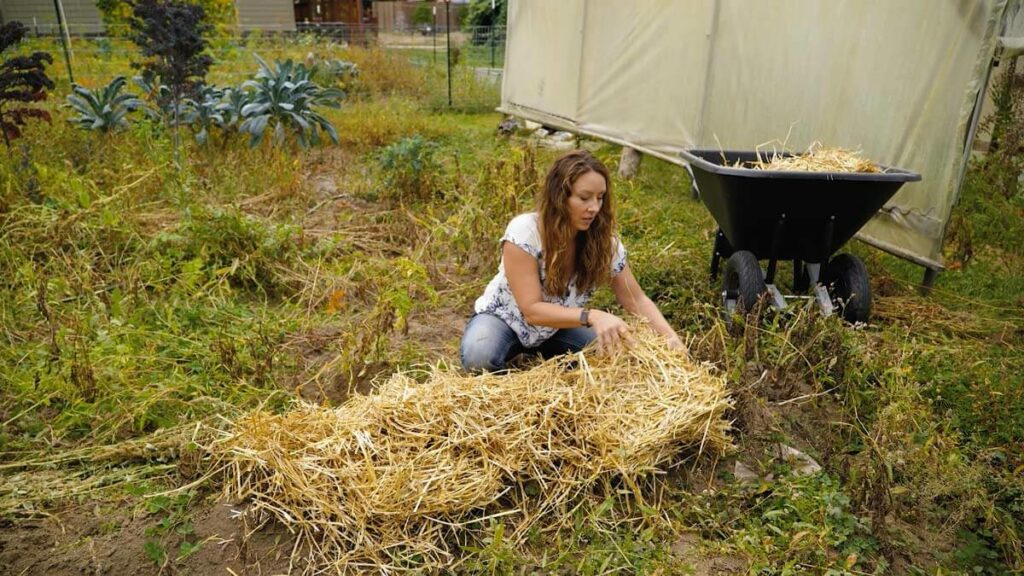
More Posts You May Enjoy
- Surviving Winter Without Electricity
- Winter Vegetable Garden (Storing Vegetables in the Garden)
- Tips for Freezing Temps & Storms on the Homestead
- How to Prepare for Emergencies in Winter
- Grow Basil Indoors All Winter
- Signs To Watch For With An Expecting Cow
- Scottish Highland Cows: A Unique Cattle Breed
- 3 Tips for Garden Planning Success (During the Winter Months)
- How to Harvest & Store Potatoes (Without a Root Cellar)
[fusebox_transcript]
